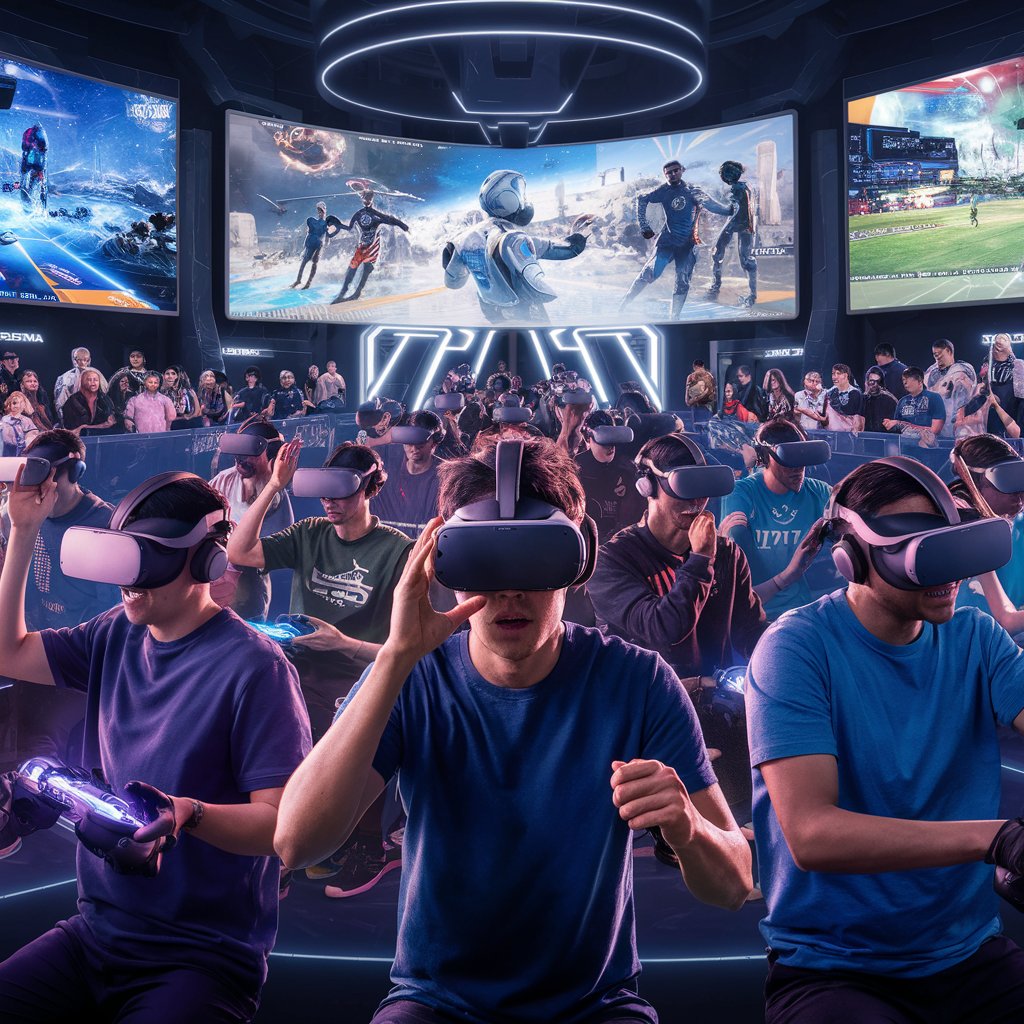Virtual reality (VR) technology is significantly reshaping game design within the esports industry, driving innovation and transforming how games are conceptualized, developed, and experienced. As VR becomes increasingly sophisticated, it is influencing every aspect of game design, from gameplay mechanics to player interaction and environmental creation.
One of the most profound impacts of VR on game design in esports is the shift towards more immersive and interactive experiences. Traditional esports games are typically designed for 2D screens, but VR introduces a new dimension, enabling designers to create fully three-dimensional environments. This spatial immersion allows players to experience games in a more realistic and engaging manner. Designers can now craft intricate virtual worlds that players can navigate with a greater sense of presence and depth. This transformation in game environments not only enhances the overall gaming experience but also opens up new possibilities for game mechanics and strategies.
In addition to environmental changes, VR technology has a significant impact on gameplay mechanics and controls. Traditional input methods, such as keyboards and controllers, are replaced with VR-specific controls that mimic real-world movements. This shift demands a rethinking of how players interact with the game. Game designers must develop intuitive control schemes that allow players to perform complex actions and movements naturally. The integration of VR controllers and motion sensors enables more precise and dynamic gameplay, offering a more authentic representation of player actions. This evolution in controls can lead to the creation of entirely new genres and gameplay styles within esports.
Another area where VR is influencing game design is in the development of innovative gameplay modes and features. VR allows for the creation of unique game mechanics that are not feasible in traditional gaming formats. For instance, VR can introduce elements of physical movement and spatial awareness into competitive games, offering new layers of strategy and skill. Designers can experiment with gameplay features that leverage the VR environment, such as interactive objects, spatial puzzles, and real-time environmental changes. These innovations can lead to a more engaging and varied competitive experience, pushing the boundaries of what is possible in esports.
The integration of VR also impacts the spectator experience in esports. Traditionally, viewers observe games from a fixed perspective on a screen, but VR offers the potential for a more immersive viewing experience. Spectators can explore virtual arenas, watch matches from the players’ viewpoints, or even interact with the game environment in real-time. This enhanced engagement can attract a broader audience and provide a more captivating viewing experience. Game designers can now consider the spectator experience as an integral part of their design process, ensuring that both players and viewers benefit from the immersive qualities of VR.
Despite these advancements, the integration of VR in esports also presents challenges. The technology requires specialized equipment and can be cost-prohibitive for both players and organizers. Additionally, designing games that are both enjoyable and accessible in VR demands a careful balance between innovation and usability. Game designers must address these challenges to ensure that VR can be effectively implemented in the esports arena.
In summary, VR technology is profoundly influencing game design in esports by enhancing immersion, introducing innovative gameplay mechanics, and transforming the spectator experience. As VR continues to evolve, its impact on game design will likely grow, leading to new opportunities and challenges in the esports industry. The ability to create more immersive and engaging experiences through VR represents a significant advancement in game design, offering exciting possibilities for the future of competitive gaming.

